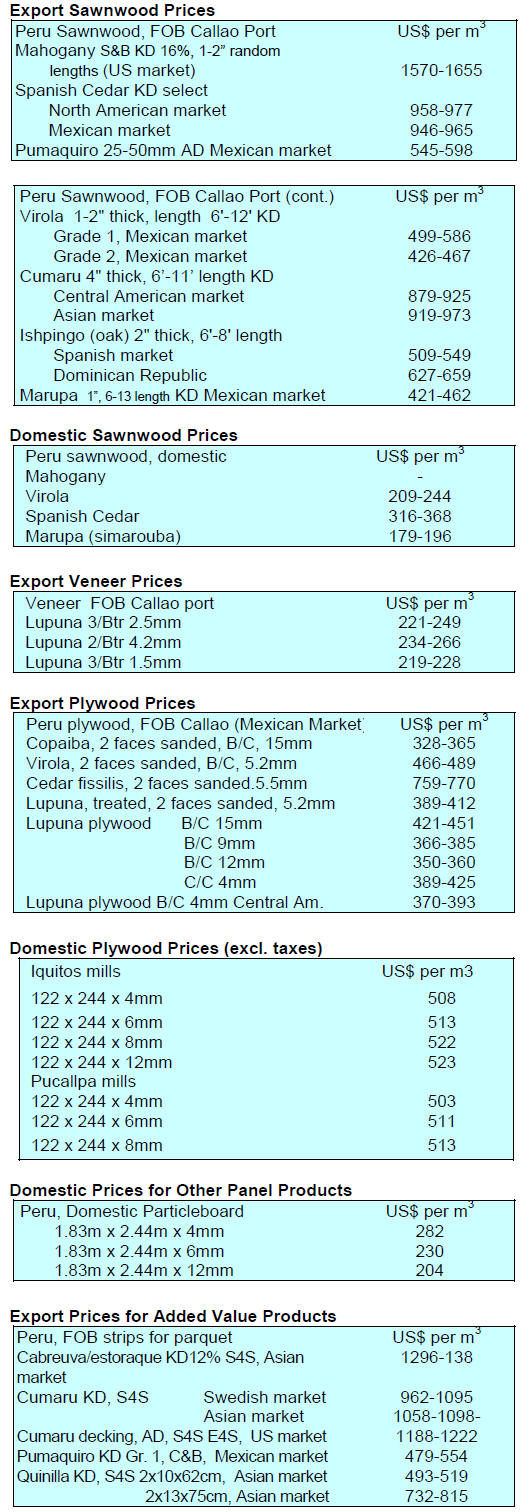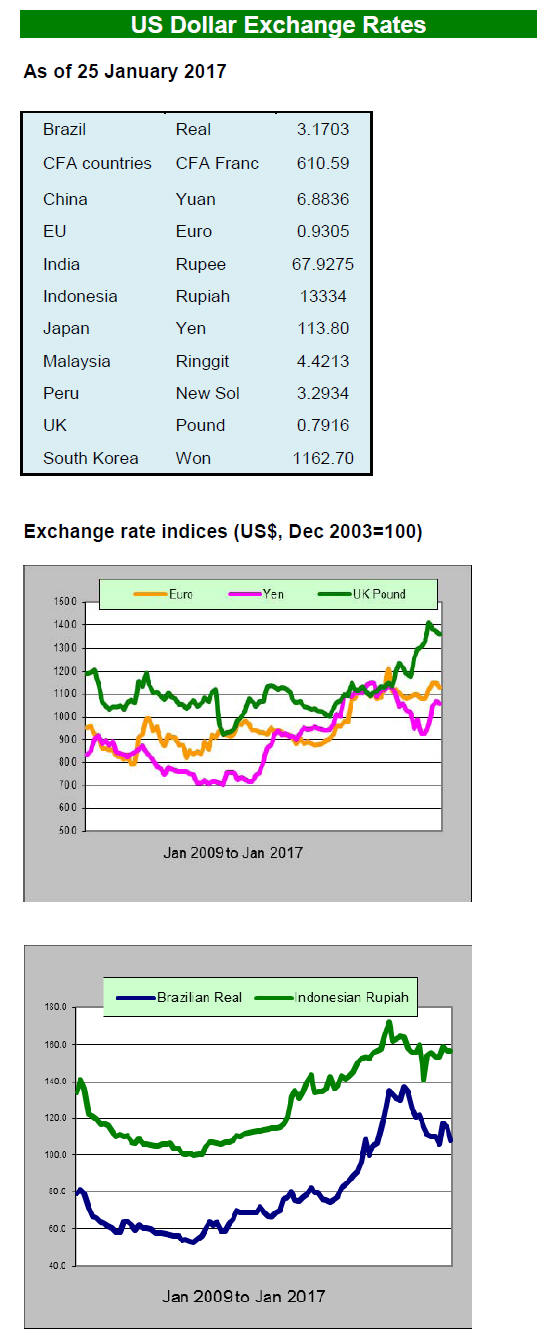2. GHANA
Private sector welcomes creation of
Business Ministry
The new government in Ghana has indicated it will create
a Ministry of Business Development to strengthen and
accelerate private sector growth.
In a press release the Association of Ghana Industries
(AGI) said this initiative is a positive move which the
AGI has advocated for many years. The AGI says “the
creation of an independent Ministry to lead and drive
private sector business in Ghana is timely”
The AGI press release says the success of this new
Ministry hinges largely on the role and contribution of the
private sector.
The private sector hopes that the new Ministry will
prioritise its interventions towards business growth with a
focus on the manufacturing sub-sector as the seed-bed of
industry and an engine of growth in the economy.
The AGI will meet with the Minister designate in the
coming days to contribute to the definition of its agenda
and roadmap for delivering on its objectives. The
Association of Ghana Industries (AGI) however cautions
government on the need to align and harmonise operations
of all institutions responsible for private sector growth in
order to avoid duplication of efforts and to ensure the
efficient use of resources.
The AGI emphasised that current private sector
institutions themselves have a wealth of information and
expertise and it is important for the new ministry to
coordinate all these resources.
See:
http://agighana.org/uploaded_files/document/2dae8ab5a0e5e918
bfea8d31d6b1ebd3.pdf
In a related development, the Minister designate for Trade
and Industry Alan Kyerematen, has said local
manufacturers could soon benefit from a government
stimulus package aimed at helping them become more
competitive. One focus of attention will be on access to
credit for SMEs.
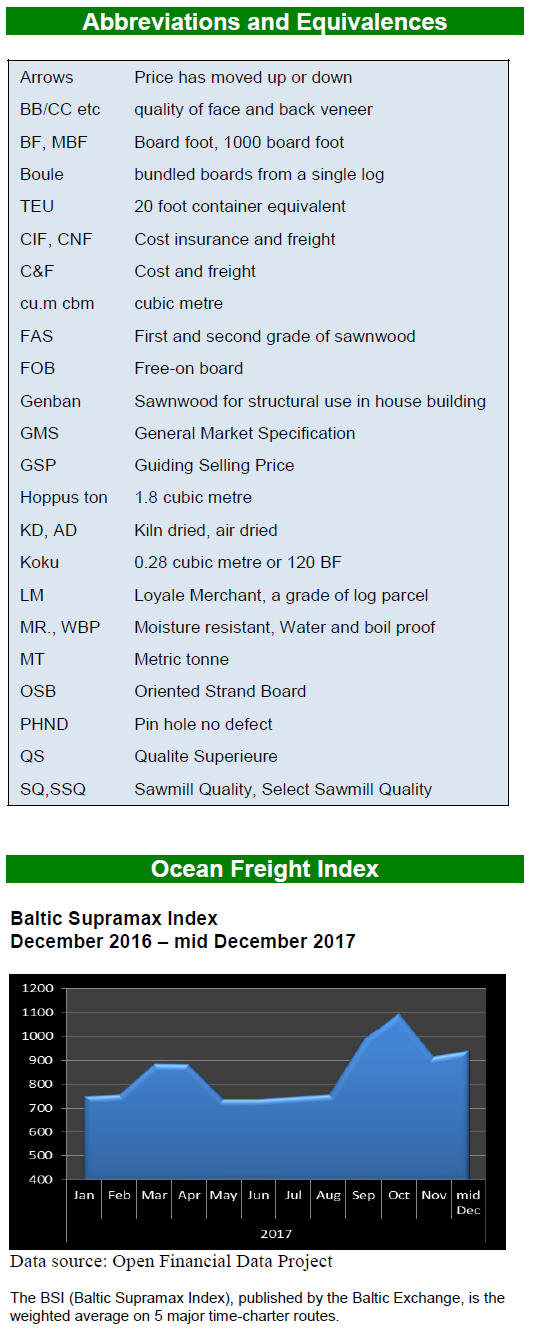
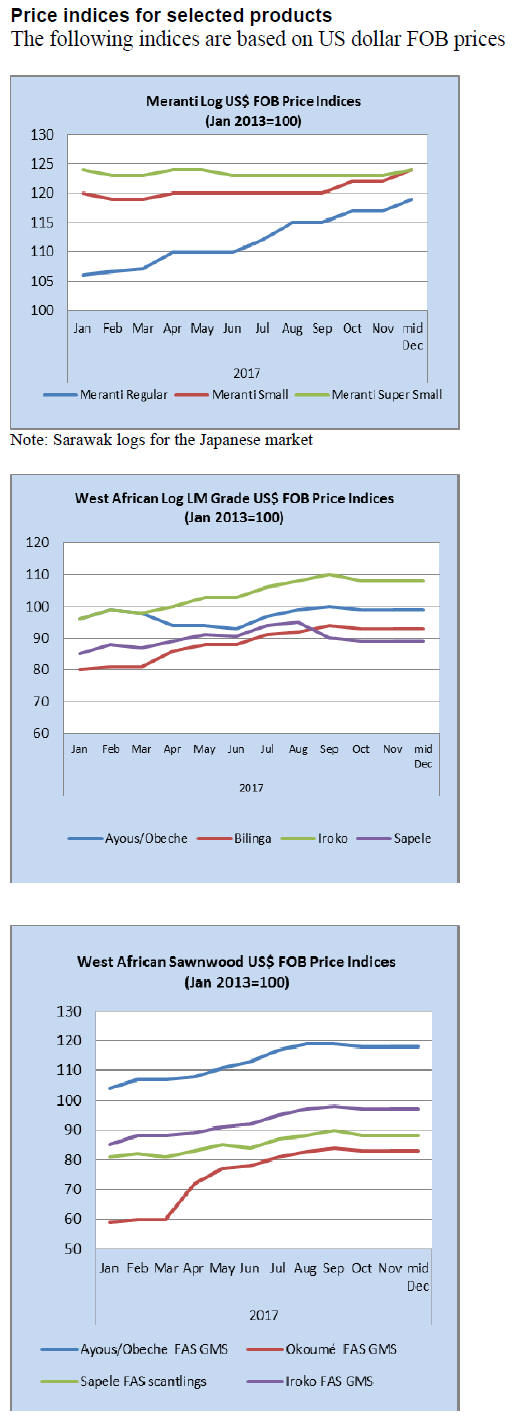
3.
SOUTH AFRICA
Mills back to work
South African companies are all back at work after the
seasonal holidays and the market is slowly stirring. Some
mills only started work during the third week of January
which means there will be some delay until production
comes out of the kilns. However this is not an immediate
problem as there is no shortage of stock.
Even if stocks of some specifications fall there are readily
available products in Zimbabwe where millers are anxious
to find export markets as domestic consumption has
collapsed. In addition, there are sources in Swaziland that
can be tapped to fill stock shortages.
As usual after the year-end holidays, consumer
consumption dropped because consumers tended to take
on a lot of debt over Christmas and in the New Year they
direct what little is available to reducing debt and paying
for essentials such expenses associated with the beginning
of the school year.
Residential building expected to remain weak
Signals from the property market are not good with house
prices slipping, especially for top end properties.
An analyst at First National Bank has written
“residential
building growth is expected to remain weak this year,
aggravating the plight of the building sector. One of the
reasons for this, say local analysts, is that in recent years
building costs have been outpacing inflation.
Door makers use pine for core to cut costs
Local traders report meranti prices have fallen slightly and
that some shipments have been delayed due to the holiday
period. It is rumoured that some door manufacturers are
cutting production costs by using pine cores for door
manufacture and using meranti for the surface.
Prices for US hardwoods are reported as generally stable
except for white oak where US shippers are looking for
better prices due to rising demand in China.
African hardwoods have started to arrive after the holiday
and generally the prices are steady. Producers of okoume
and iroko have, so far, been unsuccessful in securing price
increases. Traders say the redwoods are selling quite well
with most of the market preferring edinam over the
mahoganies so prices for acajou are under pressure.
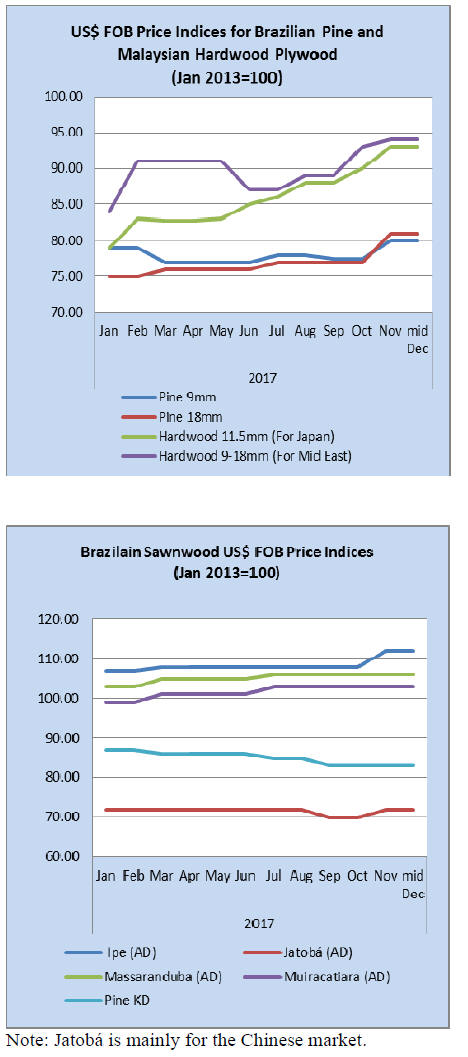
4.
MALAYSIA
2017 looking brighter for economy
The Malaysian Institute of Economic Research (MIER)
has forecast a Gross Domestic Product (GDP) growth of
4.5 per cent for Malaysia this year against an estimated
growth of 4.2 per cent projected for 2016.
The projection was based on the country’s healthy trade
balance in September, October and November last year,
which stood at RM6.6 billion, RM9.8 billion and RM9
billion, respectively.
MIER’s economic update anticipates the economy will
perform better in 2017 if the trade balance momentum
continues. GDP growth forecast for 2017 was revised
downwards to 4.5 per cent from its previous forecast of
between 4.5 and 5.5 per cent.
https://www.mier.org.my/presentations/archives/pdfrestore/
presentations/archives/pdf/MEO4Q2016.pdf
The positive views from MIER were supported by a report
from a Malaysian investment bank, Hong Leong, which
says “the outlook remains bright if not brighter in 2017 for
the wood-based manufacturers as earnings will be
underpinned mainly by continued weakness in the ringgit.
Foreign labour issue near resolution
Labour shortages which have held down growth in the
timber sector are set to ease as the government has
introduced a new policy, the Employer Mandatory
Commitment (EMC) which place more responsibility on
companies hiring foreign workers such as paying the
foreign worker levy.
The EMC will hold employers fully accountable for their
foreign workers on aspects such as job application,
rehiring and repatriation and the employers will no longer
be able to deduct the levy from the wages of their workers.
The new scheme was to be introduced at the beginning of
this year but has now been rescheduled for 2018 according
to media reports.
Certification in Sarawak
The State wants the main timber companies to have at
least one logging area certified by 2017. However, some
companies have expressed concern over the conditions set
by the Malaysian Timber Certification Scheme (MTCS).
They fear that endorsement by PEFC means that MTCS is
placed under the rules of this international certification
scheme which may be detrimental to the autonomy of the
timber industry in Sarawak.
The Borneo Post has two interesting stories on this
challenging domestic issue:
http://www.theborneopost.com/2017/01/11/grave-concernon-
timber-certification-linking-to-foreign-control-body/
and
http://www.theborneopost.com/2017/01/19/wan-junaidisheds-
light-on-mtcs-benefits/
Plywood export prices
Plywood traders in Sarawak reported FOB export prices:
Floor base FB (11.5mm) US$540/cu.m
Concrete formboard panels CP (3’ x 6’) US$430/cu.m
Coated formboard panels UCP (3’ x 6’) US$500/cu.m
Standard panels (9mm and up)
S. Korea
US$395/cu.m
Taiwan P.o.C US$400/cu.m
Hong Kong
US$400/cu.m
Middle East
US$380/cu.m
5. INDONESIA
Indonesian FLEGT timber arrives in Europe
Indonesia's first verified legal timber shipment arrived in
Europe recently. On 16 January the first shipment arrived
at Tilbury Port in the UK where the Indonesian
Ambassador to London, Rizal Sukma, was on hand to
celebrate its arrival.
A few days later a further shipment arrived in Antwerp
and to celebrate its arrival the Indonesian Embassy in
Brussels and the Belgian importers organised a reception.
Easier to do business in Indonesia
Indonesia’s fiscal policy reforms and the improved
investment climate are expected to boost the economy
according to a press release from the World Bank
launching its latest report on Indonesia.
See: http://www.worldbank.org/en/news/pressrelease/
2017/01/17/world-bank-improved-effectiveness-ofspending-
in-indonesia-can-boost-growth-in-2017
The report says Indonesia has improved its fiscal
credibility but needs to accelerate tax administration and
policy reforms in order to increase tax revenue.
The report also highlights Indonesia’s recent improvement
in the World Bank’s Ease of Doing Business ranking to
91st in 2017 from 106th in 2016, making it among the top
10 improvers globally. This improvement is particularly
due to reforms that eased Starting a Business, Getting
Electricity, Paying Taxes, Registering Property, Getting
Credit, Enforcing Contracts and Trading Across Borders.
“The government’s investment climate reforms have made
it easier for businesses to open and operate, but boosting
private investment for economic growth will require
policymakers to move now on medium-term structural
reforms” said Hans Anand Beck, Acting Lead
Economist at the Bank.
The report, now in its sixth year of production, is produced
with support from the Australian government’s
Department of Foreign Affairs and Trade.
EU Trade Remedy Policy a challenge for exporters
The EU has revised its Trade Remedy Policy and the
Director General of Foreign Trade, Indonesian Ministry of
Trade, Dody Edward, said the implementation of this
policy could impact the flow of exports to the EU if the
EU determines products are being dumped or subsidised in
Indonesia.
Also voicing concern was the Director of Trade Security
Ministry of Trade, Pradnyawati who reported some
Indonesian products had been affected by anti-dumping
measures in the US. He said the EU is a strategic market
for Indonesian exporters of agricultural and fishery
products as well as wood products.
Restoration of peatland in 2017
The Indonesia government has announced plans to restore
400,000 hectares of peatland this year, a lower target
compared to 2016. Environment and Forestry Minister,
Siti Nurbaya Bakar, indicated that work will continue on
the construction of canals to provide the means to manage
water levels.
Nazir Foead, Head of the Peatland Restoration Agency
(BRG), said some companies with palm oil plantations
faced declining productivity due to higher water levels but
that the government would work with these companies to
minimise the impact of the peatland recover efforts.
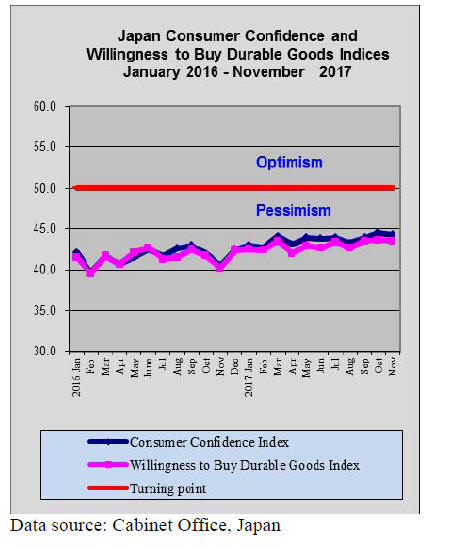
6. MYANMAR
Customs statement questioned by timber
traders
According to a news release from the Myanmar Customs
Department, 202 companies have, so far, been permitted to
export 197,512 tons of timber in the current fiscal year (1
April 2016 to 30 April 2017.
Myanmar introduced a log export ban in April 2014 and
at the same time the Forest Department banned the export
of other type of products, baulks, boules and hand hewn
squared logs.
The news release from Customs did not specify the value
or species. Analysts point to the need for better
information since 197,512 tons, if all were teak, would
have generated some US$400 million! They comment that
timber exports have never achieved such a value
suggesting the figures from Customs need further
clarification.
MTE supplying mills from log stocks
The Myanma Timber Enterprise (MTE) has forecast that
the country could earn Myanmar Kyat 250 billion (around
US$185 million) from its sale of logs. Logging in
Myanmar has been suspended for one year but the MTE
had stocks of 15,000 tons of teak logs and 300,000 tons of
other hardwoods to offer to mills in the country.
The domestic media has quoted U Aye Cho Thaung of
MTE as saying they had recorded an income from sales
destined to international markets at US$299 million while
earnings from log sales for domestic consumption was
around 90 million Kyas (about US$67 million).
Shipment of teak and tamalan seized at port
Despite the efforts of the timber trade and government to
stamp out illegal practices and eventually negotiate a VPA
with the EU a shipment of around 500 tons of illegal teak
and padauk/tamalan were recently seized in Yangon Port.
The smugglers had tried to avoid the export restrictions
and many believe that for the shipment to have got as far
as the port suggests the smugglers had help from officials
along the supply chain.
U Barber Cho, Secretary of the Myanmar Forest
Certification Committee, said “that since this attempt at
smuggling was done outside of the formal supply chain
under which exporters comply with government
regulations this single incidence should not be considered
as reflecting a weakness in the control system”.
Cho praised the seizure of this illegal shipment and said “it
was mainly caused by weak law enforcement and possibly
corruption and that there will always be those who try to
find loopholes in the formal supply chain.”
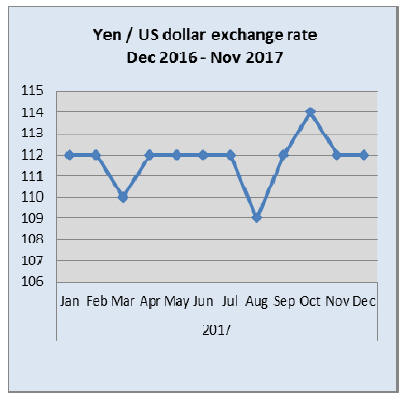
7. INDIA
India's factory output unaffected by
‘demonetisation’
India’s industrial output rose in November despite the
chaos caused by the decision of the government to
withdraw large denomination notes from circulation.
November growth rose by 5.7% year on year beating the
1.5% growth forecast by analysts.
As inflation fell in December 2016 to 3.41%, the lowest
since late 2014 it is anticipated the Reserve Bank of India
may lower interest rates at its next meeting.
More interest in sawnwood than logs
In its November 2016 e-magazine ‘Ply Reporter’ provides
an analysis of India’s log and sawnwood imports pointing
out that, over the past five years, there has been a steady
decline in log imports but that, over the same period
sawnwood imports have grown almost 200%.
Imports of good quality sawnwood of appropriate
dimension leads to a reduction of residues which is a key
concern of door manufacturers, construction companies
and furniture makers.
Initially, sawnwood imports of decorative species were
imported from America, says Ply Reporter, but increasing
volumes now come from Malaysia, Indonesia and
Myanmar and this trade has been given a boost by the
reduction in import duties arising from agreements
between ASEAN countries and India.
For the full story see:
http://emagazine.plyreporter.com/01112016/Home.aspx
Coir panel an alternative to wood based panels
India accounts for more than two-thirds of world
production of coir and coir products. Kerala is the home of
Indian coir industry.
Efforts are under way to better utilise coir and one area of
focus that has been successful is the development of a
panel termed coirboard. Coirboard is a composite of the
needle felt coir fibre bound with phenol formaldehyde
resin.
The product is 100% wood free material made out of
natural coir fibre and is a substitute for wood composite
boards and even plywood in certain applications.
The Bureau of Indian Standards (BIS) has, in cooperation
with several companies, developed Standards for
coirboard. The BIS says : The coir fibres are used as raw
material with thermosetting adhesive as binder. Indian
standard for the product has been evolved and the
corresponding number is IS 15491 : 2004.
For more see: http://coirboard.gov.in/wpcontent/
uploads/2016/09/Executive-Summary-Survey-of-Coir-
Industries-in-India.pdf and
http://www.shriyaenterprises.com/
Plantation teak imports
Demand for imported plantation logs and sawnwood
continues to be good, but the problem of phytosanitary
regulations continue and suggestions for an alternate to
methyl bromide treatment are awaited. When this issue is
resolved Indian importers would have access to a wider
range of suppliers of raw materials.
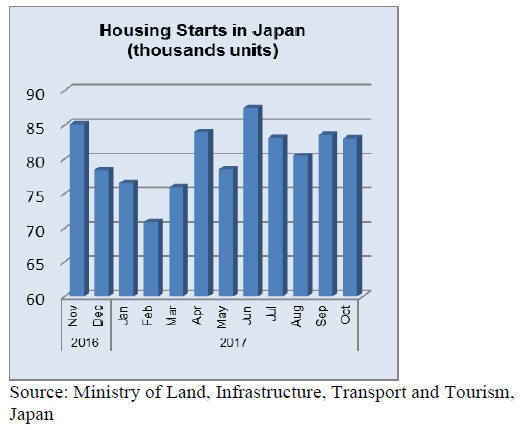
Prices for locally sawn imported hardwoods
Prices remain unchanged from early January

Myanmar teak prices
The demand and supply of Myanmar teak sawnwood is
well balanced and the steady flow of imports from
Myanmar and China has kept prices stable and allowed
Indian manufacturers to maintain exports.
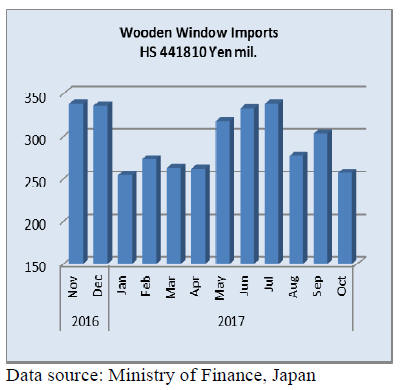
Prices for imported sawnwood
Sawnwood imports have been rising especially from
Sarawak. Local analysts say demand is steady and prices
are unchanged from a month ago.

Plywood manufactures pin hopes on interest rate
cut
to boost demand
Despite offers of discounts, plywood sales in the domestic
market remain dull. As interest rates are likely to fall
plywood manufacturers are pinning their hopes on this to
drive up consumption.
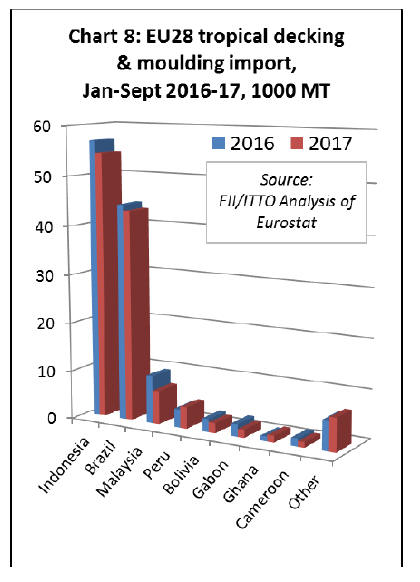
8. BRAZIL
Recovery of the furniture sector in 2017
According to the Bento Gonçalves Furniture Industry
Union (Sindmóveis), between January and November
2016 revenue earned by the Bento Gonçalves furniture
industry fell 17.4% compared to 2015 while the overall
decline in the state-wide furniture sector was 11.2%.
Despite these negative figures Sindmoveis is hopeful of a
recovery in the sector forecasting a slow start to the year
with a pick-up in the third quarter. According to
Sindmoveis, the lowering of interest rates will help
industry sentiment and consumer confidence.
SFB establishes incentive programme for
concessionaires
The Brazilian Forest Service (SFB) has established an
incentive programme for forest concessionaires (Procof)
setting out revised rules and payment schedules for forest
products harvested within national forests under forest
concession.
Under the new scheme companies can postpone payments
due to the Forest Service for up to 14 months without fines
and interest. The aim of this is to relieve the pressures on
company cash flows without compromising the financial
obligations to the federal government.
This scheme is apparently a temporary measure to take
account of the country's exceptional macroeconomic
environment and its impacts on the enterprises.
To-date, more than one million hectares of federal public
forests are under the forest concession regimes. Since
2010, when the first concessions were granted, some
500,000 cu.m of logs has been harvested generating about
R$ 45 million for the public coffers.
November and December export performance
In November 2016, the value of Brazilian exports of
wood-based products (except pulp and paper) increased
21.6% compared to November 2015, from US$205.5
million to US$249.9 million.
Pine sawnwood exports increased 42.5% in value in the 12
months to November 2016 . Over the same period the
volume of exports 46.9% from 112,600 cu.m to 165,400
cu.m.
Brazil’s tropical sawnwood exports rose 23.3% from
25,800 cu.m in November 2015 to 31,800 cu.m in
November 2016 and the value of exports increased 27%
from US$12.1 million to US$15.4 million over the same
period.
The value of pine plywood exports increased 17% year on
year in November 2016, from US$29.9 million to US$35.0
million. At the same time the volume of exports increased
17.6% from 112,600 cu.m to 132,400 cu.m.
As for tropical plywood, exports increased 22.5% in
volume, from 10,200 cu.m in November 2015 to 12,500
cu.m in November 2016. In terms of value tropical
plywood exports increased 33%, from US$3.9 million in
November 2015 to US$5.2 million in November 2016.
As for wooden furniture, exports rose from US$35.5
million in November 2015 to US$38.2 million in
November 2016, an almost 8% increase.
December trade figures have become available. Total
wood product exports (except pulp and paper) in
December 2016 increased 12.8% year on year to
US$260.2 million and the value of pine sawnwood exports
increased 29% year on year to US$ 35.1 million.
Year on year the volume of pine sawnwood exports
jumped 31.5% in December to 174,000 cu.m.
Tropical sawnwood exports also rose (46%) from 25,100
cu.m in December 2015 to 36,700 cu.m in December 2016
(from US$ 12.0 million to US$ 17.9 million over the same
period).
Both pine and tropical plywood exports increased in
December. Pine plywood exports rose 4.5% in value in
December 2016 (147,300 cu.m to 154,000 cu.m) while
tropical plywood, exports increased significantly in
volume and in value, from 8,800 cu.m (US$3.7 million) in
December 2015 to 17,900 cu.m (US$7.3 million) in
December 2016.
Exports of wooden furniture also performed well in
December rising from US$ 37.3 million in December 2015
to US$ 39.3 million in December 2016.
Product quality supports export success
The planted forests sector was able to survive the severe
downturn in consumption in the domestic market because
they were able to focus on exports.
Between January and November 2016, pulp, woodbased
panels and paper export volumes increase compared to a
year earlier, contributing to the positive result of the
sector's trade balance.
According to the Brazilian Tree Industry (Ibá), pulp
contributed US$4.8 billion (-0.1%), paper US$1.0 billion
(+ 9.7%) and woodbased panels US$220 million (+
29.4%).
In the domestic market paper sales fell slightly in the first
11 months of 2016 and sales of woodbased panels dropped
3.3% in the same period. For 2017, Ibá expects Brazil to
perform better than 2016 anticipating stronger domestic
demand.
Timber industry exported higher volumes, but earned
less
Due to a year marked by uncertainties in the domestic
economy, Brazil’s timber industry ended 2016 with lower
revenues despite an increase in export volumes.
Pine plywood export volumes in 2016 were 1,730,467
cu.m, the highest volume over the past 10 years and a 16%
increase compared to the volume shipped in 2015. The
monthly average plywood shipment was 144,206 cu.m,
24,000 cu.m more per month than in 2015.
Among the many destinations for Brazil’s pine plywood in
2016 were: the United States (28%), the United Kingdom
(16%), Belgium (11%), Germany (9.7%) and Mexico,
almost 5%.
The volume of pine sawnwood exported in 2016 totalled
2,166,555 cu.m.
A large volume of pine sawnwood is consumed
domestically mainly in civil construction. Among the
export buyers were the United States ( 42%), China, (13%)
and Saudi Arabia, almost 7%.
Pine veneer exports in 2016 were 30% up year on year
reaching 70,514 cu.m 2016. The main destinations were
Malaysia (40%), South Korea, (24%), and China, (11.5%).
In 2016, 62,803 cu.m of tropical plywood were exported
with the main markets being Argentina (26%), the United
States, (17%), the United Kingdom, (12%), Italy, (5%) and
the Dominican Republic a further 5%.
The volume of tropical sawnwood exported in 2016
reached 657,576 cu.m and the main markets were the
United States (21%), India (8.7%), Netherlands (8.4%),
China (8%) and Vietnam, 5.6%.
According to the Brazilian Association of Mechanically-
Processed Timber Industry (ABIMCI), one of the major
challenges that the industry will face in 2017 will be to
improve business strategies in order to protect themselves
against threats that may come from the domestic economy,
including rising costs of electricity, logistics and raw
material inputs.
Industry welcomes cut in interest rates
Inflation as measured by the Broad Consumer Price Index
(IPCA) ended 2016 with a rise of 6.29%, just below the
government’s target ceiling of 6.5%. Fortunately inflation
was below that of 2015 (+ 10.67%) and 2014 (+ 6.41%).
In January, during the first meeting of the year, the
Monetary Policy Committee (COPOM) of the Central
Bank lowered the basic interest rate for the third
consecutive time, from 13.75% to 13%. The Central Bank
affirmed that the decision was made based on indicators
that point to an economic activity below expectations.

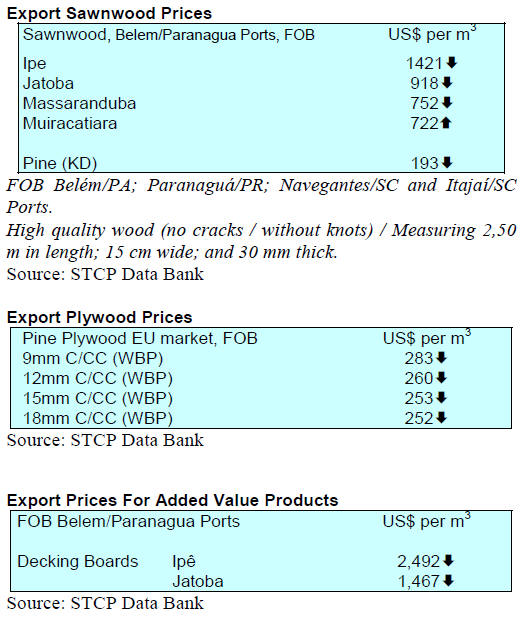
9.
PERU
Imports of particleboard jumped in 2016
Ecuador and Chile were the two most important suppliers
of particleboard to Peru in 2016 with shipments of
US$32.8 million and US$25.9 million, respectively.
While shipments from Ecuador fell slightly in 2016 (-
0.8%), Chilean exports grew over 12%. Spain remained
the third ranked supplier despite a slight drop in shipments
in 2016 (-9%). Brazil, with exports to Peru worth US$8.1
million, was the fourth ranked supplier.
Among the main importing companies, Novopan and
Arauco returned to be the top importers with imports of
US$31.3 and US$15.1 million respectively. Novopan's
imports grew 1.4% and Arauco's increased 7.3% compared
to 2015. Masisa and Grupo Martín followed with imports
worth US$9.7 and US$8.9 million.
Roundtable on forestry development
The Ministry of Agriculture and Irrigation (MINAGRI)
officially approved a forestry board according to a
ministerial resolution published in the first half of January.
The technical secretariat to support this development will
be assumed by SERFOR. The forestry board will be
initiated quickly and those invited must present their ideas
and plans before 23 February.
The ministerial resolution stresses that the group will be
charged with identifying, promoting, and proposing action
on forestry matters "that will allow sustainable forest
development and the formalisation of its stakeholders".
The functions of the forestry board also include
identifying new opportunities in the forestry sector and
proposing and coordinating actions related to improving
the management and implementation of public policies.
Government support for wood products trade
The Executive Branch issued a Legislative Decree 1319
that will seek to promote trade in forest products and
wildlife of legal origin.
The measure will be supported by implementation of a
national forest and wildlife information system (SNFFS), a
tool of the National System of Forest and Wildlife
Management (Sinafor) and managed by the National
Forestry and Wildlife Service (Serfor).
The Decree also requires the registration of portable
sawmills, forest tractors and vehicles authorised for the
extraction and transport of timber products to primary
processing centers. In addition, the Decree authorises the
establishment of strategic control posts in the national
territory identified by Serfor.
Simplifications of Forestry Law will boost the sector
A Legislative Decree that simplifies administrative
procedures in the Forestry and Wildlife Law will help
develop the timber sector according to Erik Fischer, the
president of the Timber Committee of the Association of
Exporters (Adex).
He described as positive the measures defined in the
Legislative Decree No. 1283 as they could mean quicker
action to recover abandoned concessions. Fischer
emphasised the need to promote the production of raw
material for the forestry sector because of the 7.5 million
hectares that were tendered for concessions only around
25% are operational.
Serfor - National Forest Information System to be
tested
Local forest authorities are working to strengthen the
oversight of natural forest concessions and plantations in
the country. To aid this a National Forest and Wildlife
Information System (SNIFFS), a digital platform that will
allow greater control and monitoring of the timber
resource, is expected to be operational in the first quarter.
This was announced by Juan Carlos Guzmán Carlín,
Director General of Forestry and Wildlife Competitiveness
and Policy in Serfor. He said "this will help the exchange
of information between the regional and national
government and will allow better control and traceability”.
Jobs generated by the forestry sector
The forest sector generates vast numbers of jobs.
According to the Central Reserve Bank (BCR) for every
US$1 million in wood products exported, more than 300
Peruvians are employed. The timber sector is the third
highest agro-export activity that generates according to
ÁDEX.
